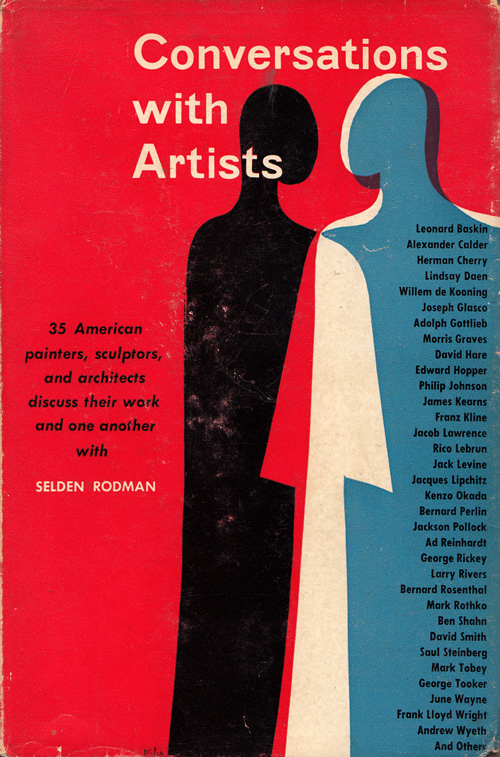Direi che tutte le persone si dividono in due gruppi:
- quelle che cercano di rifare per tutta la vita sempre le stesse cose;
- quelle che dopo un po' si stufano e cercano di fare cose differenti.
Il problema è che pochi si rendono conto del gruppo in cui si trovano...
sabato 23 novembre 2013
giovedì 10 ottobre 2013
Serra vs. space
"Sono sempre stato interessato non tanto alla differenza tra una cabina del telefono e uno stadio ma tra cos'e alla tua destra e cosa alla tua sinistra, e cosa, fisicamente, non capisci delle cose che ti stanno davanti.
E la cosa delle curve è legata a questo.
Se stai in piedi sul bordo di una curva e vedi la sua concavità riesci a capire tutto lo spazio che occupa e la forma e i suoi limiti.
Ma se cammini dentro una forma convessa, o al suo fianco, non la percepisci, non capisci niente finché non ti allontani; ma è la stessa curva separata solo dallo spessore del materiale.
Divenni sempre più interessato a spostarmi e camminare e guardare e capire questa cosa.
Volevo provare a raggruppare uno spazio.
E questo è un aspetto del tuo lavoro; ma raccontami di Philip Glass.
Lui faceva l'idraulico e poi lavorava con me tutti i giorni.Richard Serra intervistato da Maurizio Cattelan su Wired
Passavamo i pomeriggi a parlare di problemi, di possibilità e ci presentavamo proposte e io avevo scritto una lista di verbi - tagliare, sollevare, rotolare, mischiare - che poi cercavamo di rappresentare con del materiale.
Una volta prendemmo una foglio di gomma largo un metro e mezzo, lungo 3 metri e spesso 6 centimetri.
Mettemmo le mani ai lati - era il verbo “sollevare” - e lo alzammo.
Rimase in piedi e aveva una superficie topografica, e quello che lo teneva in piedi era semplicemente la forza di gravità.
Iniziammo a pensare: perché non usare la gravità come sottotesto del nostro lavoro?
Allora cominciamo a sollevare lastre di piombo e ad appoggiarle come un castello di carta.
Allora ero sposato; eravamo al quarto piano di uno studio a New York, e mia moglie entrò nello studio e disse:
"Non hai mica intenzione di mostrare quella cosa vero?"
E io risposi:
“Sì perchè?”
E lei disse:
“Quella non è arte Richard”
E io dissi:
“Se per te questa non è arte non possiamo più rimanere sposati”
E divorziammo immediatamente."
domenica 29 settembre 2013
mercoledì 4 settembre 2013
dalla finestra di corvara si vede il mondo che cambia
Etichette:
corvara,
fotografia
domenica 18 agosto 2013
John Cleese e la creatività
La maggiorparte della gente che non ha idea di quello che sta facendo, non ha idea di non avere idea di quello che sta facendo
John Marwood Cleese è un elegante signore inglese che si sta avvicinando agli 80 anni.
Qui sotto lo vediamo in un ritratto di qualche anno fa durante il suo lavoro:
 |
| un pesce di nome wanda |
John, per il lavoro che fa, ha tutte le qualità per dissertare di creatività ed ecco quindi il suo pensiero.
Etichette:
creatività,
john cleese,
video
home... is where I want to be
Finalmente qualcuno ha messo on line la versione integrale di mon oncle di Jacques Tati.
Un vero capolavoro di intelligenza e di estetica del 1958.
Mentre raccolgo le briciole di credibilità che mi restano, il solo commento che mi viene è il seguente:
venerdì 16 agosto 2013
quel rissoso irascibile carissimo Frank Lloyd
La chiesa di Ronchamp? "Un pezzo di formaggio svizzero..."
La Glass House? "... ma è architettura??"
Spassosa intervista a Wright quasi novantenne da un libro praticamente introvabile che mette uno accanto all'altro i padri della cultura artistica americana degli anni '50.
da brain pickings
Frank Lloyd Wright may be one of history’s greatest architects, but he was also a source ofendlessly quotable wit, timeless wisdom on education, and a lesser-known but exceptionally talented graphic artist. Above all, however, he was man of invariably strong opinions, always unapologetic in his convictions and unafraid to challenge even the most sacrosanct of dogmas.
In Conversations with Artists (public library) — writer and public intellectual Selden Rodman’s fantastic 1957 anthology, which also gave usJackson Pollock on art and mortality shortly before the artist’s death — Wright unleashes the full force of his opinionation on some of his architectural elite peers, the disconnect between education and culture, and the trouble with the Manhattan skyline.
When asked about his opinion of Le Corbusier’s epoch-making church on the French-Swiss border, Wright scoffs:
An angel cake punched full of holes — or should I say a piece of Swiss Cheese?
Philip Johnson’s iconic Glass House gets the even shorter end of the stick:
Is it Philip? … And is it architecture?
He later elaborates on his contempt:
Philip Johnson is a highbrow. A highbrow is a man educated beyond his capacity. His house is a box of glass — not shelter. The meaning of the word shelter includes privacy.
When Rodman admires a Chinese silk painting in Wright’s home, the architect offers, “almost apologetically,” a disclaimer shared by those who have found their purpose and attained fulfilling work:
It looks as though we live pretty soft here, doesn’t it? We don’t. You’d be surprised at the amount of work that goes on… It’s never work though, is it, when you’re doing anything organic?
Rodman visits with Wright again some weeks later and finds him, at the time in his late eighties, “very handsome,” dressed in a “pink shirt with a white collar and a striped tie, knotted at the throat, leaving the ends folded back artist-fashion fin de siècle.” The architect is in an especially feisty mood that day. His first target is Gotham’s skyline:
The New York skyline is a medieval atrocity. … Good architecture shouldn’t have to depend on distance or the dark for its effects.
He takes the same sword to the institutions of formal education, for which hefamously eviscerated throughout his life:
The universities are medieval antiquities, too. They’ll never get culture through education. … The common man will never get it. He is the enemy of culture. Culture is made for him — but in spite of him, because he believes only what he sees, and he sees only what he can put his hands on. We’ve missed culture somewhere along the way.
On a subsequent visit, Rodman finds Wright in a much more amenable mood, possibly due to the company of a lady he was having tea with — and no average lady but the revered critic and champion of art Emily Genauer. Rodman, tickled by Wright’s good humor, decides to ask him whether there was any truth to the legend that he once absentmindedly went to see a client in his pajama bottoms. The answer bespeaks both the artifice of pop culture myths and the commanding diva-disposition that only creative geniuses can afford:
Not a word of truth. In the first place, whatever I am, I am always well dressed. In the second place, I don’t go to clients. They come to me.
Wright then returns to the subject of the disconnect between culture and education:
All culture is indigenous, as distinguished from education.
When Rodman asks him how America is to get an indigenous culture if it has failed to do so in two centuries, Wright responds with a beautiful metaphor from botany:
The same way the Dutch developed the delphinium. They started with the larkspur, and kept cultivating the roots until they had something better. They didn’t start from scratch. They were smart enough to start with something humble. Until they knew its nature they weren’t in a position to improve on it. It’s the same with culture. Until this lesson is learned we’ll get nowhere.
When Rodman suggests that perhaps we’re learning it since our taste appears to be improving, Wright retorts:
Taste [isn't] enough … taste is a matter of ignorance. If you know what you are tasting, you don’t have to taste.
The conversation concludes by circling back to New York. In 1943, Wright had been commissioned to design the new building for the city’s legendary Guggenheim Museum. He would die several weeks before the museum’s completion in 1959. Rodman asks him whether he would’ve taken a similar commission had the project been a skyscraper rather than a museum, and Wright responds in the negative with his characteristic clarity of conviction:
He ends the conversation by citing an entertaining encounter with media mogul Henry Luce, in which he surprised Luce by referring to himself, in contrast to “the old professionals,” as “the oldest amateur.” (Coincidentally, the following year, Wright coined his famous aphorism that “an expert is a man who has stopped thinking because ‘he knows.’”)It would be immoral to add to the congestion of this already hopeless city. … The only way to save this city is to take buildings out of it, not to put more in, and of course the latter is what they are doing.”
Etichette:
brain pickings,
wright
giovedì 14 febbraio 2013
piazza pulita
Là dove c'era una città ora c'è l'erba
Projecte de restauració del paratge de Tudela-Culip (Club Med) al Parc Natural del Cap de Creus from ielei on Vimeo.
Projecte de restauració del paratge de Tudela-Culip (Club Med) al Parc Natural del Cap de Creus from ielei on Vimeo.
Etichette:
costa brava,
landscape,
paesaggio
venerdì 1 febbraio 2013
l'ombelico del mondo
Lo studio norvegese Snøhetta sta lavorando alla risistemazione di Times Square.
Questo articolo del Post spiega come.
Questo articolo del Post spiega come.
Dykers racconta un aneddoto su un amico che va alle feste con il suo cane pastore il cane passa la serata sfiorando e toccando gli ospiti distratti nelle loro conversazioni fino a che al termine della serata, si trovano tutti radunati nella stessa zona della casa, senza rendersene conto: «Come architetti, io penso, dobbiamo provare a essere come il cane pastore alle feste».
Etichette:
new york,
Snøhetta,
urban design
mercoledì 9 gennaio 2013
mercoledì 2 gennaio 2013
filosofia pelosa
Ciascuno di noi si sceglie qualcuno come esempio da seguire nella vita. Woody Allen ad esempio ha scelto di ispirarsi a dio, io invece ho scelto un bimbo peloso con il nasone.
Alla fine scopro che non sono l'unico: meno male!
Guida di Snoopy alla vita dello scrittore
Iscriviti a:
Post (Atom)








